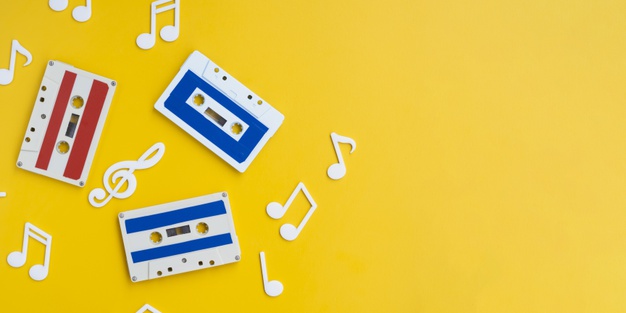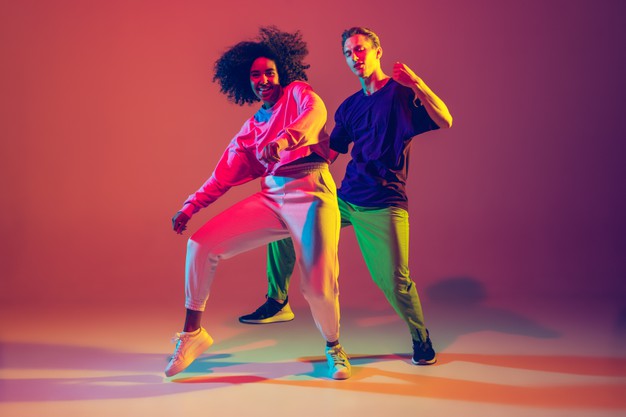When a caveman started beating his cave wall with a stick like a drummer, the caveman next door grew his hair long and started wearing his caveman pants in the exact same way. That might not be 100% true – but music has undoubtedly been interlaced with fashion since its origins.
This guide is all about the relationship between music and fashion, plus how musicians have the power to influence their fans through their own wardrobe choices. We’ll also look at how the two industries may be closer than ever in 2024, and if it works the other way too – can fashion influence the music industry?
How important is fashion?

Fashion and style are essential because the clothing choices we make are a huge part of our cultural and personal identity. Our clothing decisions is one of the first things another person notices about us, and it will contribute to that first impression. In a nutshell, what we were is used as a statement to others and an outward expression of who we really are.
But that’s not all. What we wear and particular styles are also used to determine social class, status and even the ability to enter a venue or event. We’re referring to dress codes, of course, and who can enter a nightclub, restaurant or casino. Most establishments have moved away from strict dress codes and are becoming more relaxed, and you can always enjoy some events online from the comfort of home – such as online casinos. For many established online brands like partycasino.com wherein dress codes are not as compulsory when you play their live dealer casino games.
How does music influence fashion?

Music can influence fashion through the industry’s musicians. These are the main people who fans look up to and idolise.
When someone sees their famous musician wearing a new style of clothing, it creates interest in that clothing and may persuade them to buy into that style. An example of this is famously identified in 1986 when Run D.M.C brought out a track called My Adidas, resulting in a wave of people buying new Adidas trainers. The three-stripers then gave the band around $1.5 million (USD) as an endorsement. It is just one example of how music and artists can promote a brand with phenomenal results.
Of course, some musicians don’t promote brands and styles directly or with any purpose whatsoever. They may choose what they personally like, and the fans follow in admiration. When groups of people adopt the same styles specific to a musician, it creates a sense of identity amongst that group. The same way particular form of dress sense is identifiable in bikers, “goths” (think of “goth music”) or the fans of one sports team. So when the same music fans start buying the same tour tees or just copying the brands their favourite band wear, they become part of a shared group and allow their music tastes to be part of their visible personal identity.
Does music influence fashion even more today?

It could be argued that music is experiencing an even closer relationship with the fashion industry in today’s world. Modern singers and artists don’t just throw on some clothes, and their fans try to emulate their look. These contemporary artists are co-signing specific brands to be a part of their music videos, making a particular brand – rather than a style – simultaneous with their work.
Moreover, other musicians are starting their own clothing lines and brands. Now you don’t just listen to a musician – you can listen to them and wear them. With the additional powers of social media, these artists can promote their own clothing line directly to the people who are most likely to buy them, their followers and their biggest fans.
Artists using fashion as a marketing tool

Sometimes the style of a musician can be sued to stir the pot and get people talking about him or her, which then contributes to an interest in their music. One of the best examples of this is Lady Gaga. The performer is well-known for some outlandish choices in attire which grab the headlines and trend on the socials. In fact, many people who are not into her music will be able to recall some of her wardrobe choices. This is also a clever way to market herself as an artist and get her music noticed.
She’s not the only one doing it. More recently, Billie Eilish has been catching the headlines for her outfits. She embraces baggy colourful clothes and tracksuits, which are out of the norm for people of her age at the moment. And her fans love this fresh new attitude to clothing.
Does fashion also influence music?

You could argue that the above is already an example of how what we choose to wear can influence the music industry through clever marketing. But can what is worn influence music in other ways. The answer is yes, it does.
There are scores of examples of new trends and brands being mentioned within song lyrics. Kanye has talked about rocking flannels like Kurt Cobain; Gaga has referenced Jimmy Cho, and Lana Del Ray likes those blue jeans.
Brands may pay for these types of references, or they may be used voluntarily by the artist as part of their own song writing. Either way, it shows how fashion is penetrating the lyrics of songs and staking a place in the final product. This is unsurprising considering style has a connection to our personal identity, and so often do the lyrics in songs.
It’s important to remember that it doesn’t just influence the music industry. Still, both industries are hyper close to one another and constantly borrowing from one another and making meta-references.
